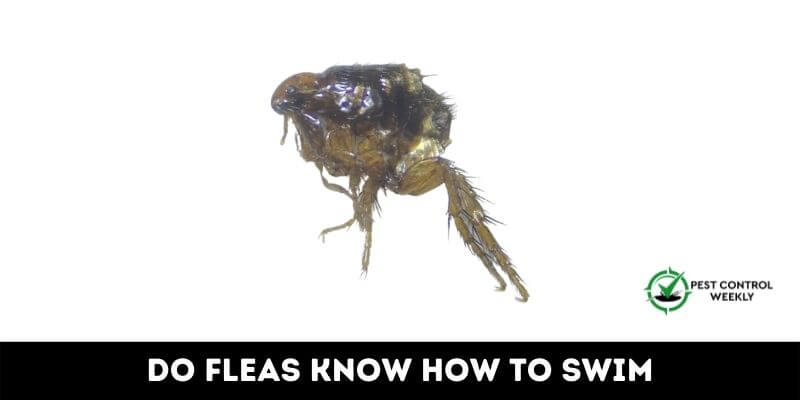Fleas have exceptional survival skills as well. Researchers claim that if a flea is thrown into the water, it can survive for up to a week. A question clicked in my mind: Do Fleas know how to swim when dropped into water?
Fleas cannot swim but can survive in water for up to a week. They stay afloat using their wax-coated cuticles, which repel water, allowing them to thrash on the surface until they find something to cling to and escape. Submersion for 24 hours, however, will drown them.
They instead depend on their cuticle wax to keep them floating and enable them to thrash around on the water’s surface until they come across anything they can cling to and therefore jump out of the water. You may learn more by reading the entire article.
How Fleas Survive In Water Without Swimming?
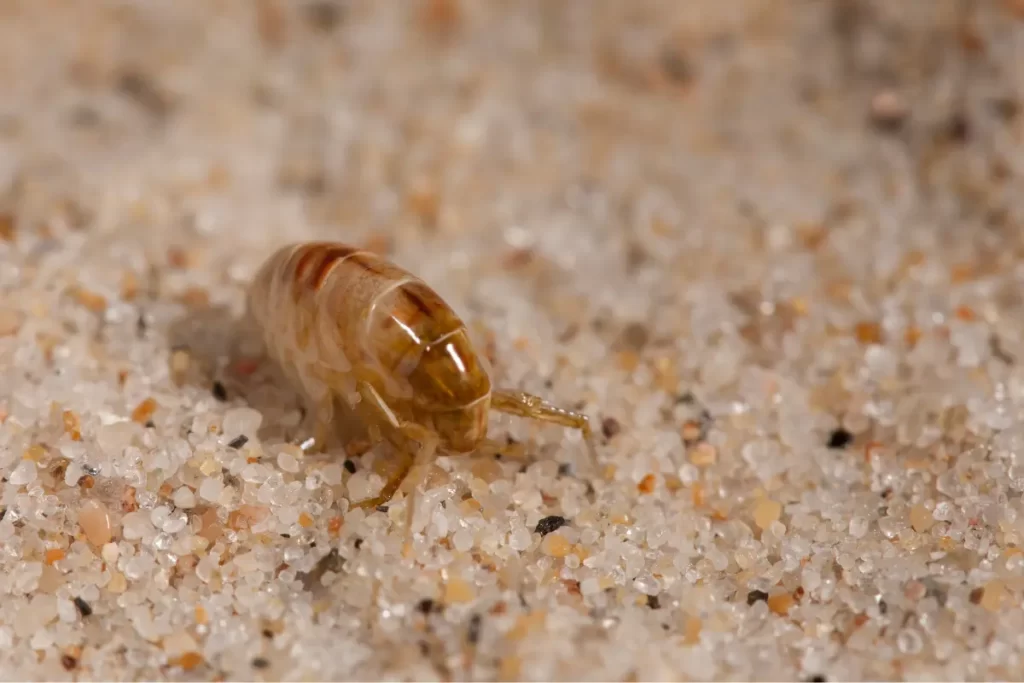
The cuticles of fleas are wax-coated. They are non-wet tables because of the waxy outer layer, which repels water. Fleas can more easily pass through the host’s hair thanks to the oil-like covering. Cuticle wax probably extends into the trachea and prevents water from entering the respiratory system.
Because of their water-resistant cuticle and small size, Fleas do not break the surface tension of water. They’ll stay on the water’s surface in their natural habitats, writhing around and possibly creeping out. The rim of the water container can be made leak-proof by applying petroleum jelly.
When dropped in water, fleas can live for up to seven days. Fleas need at least one day to drown when submerged.
Are Fleas Afraid Of Water?
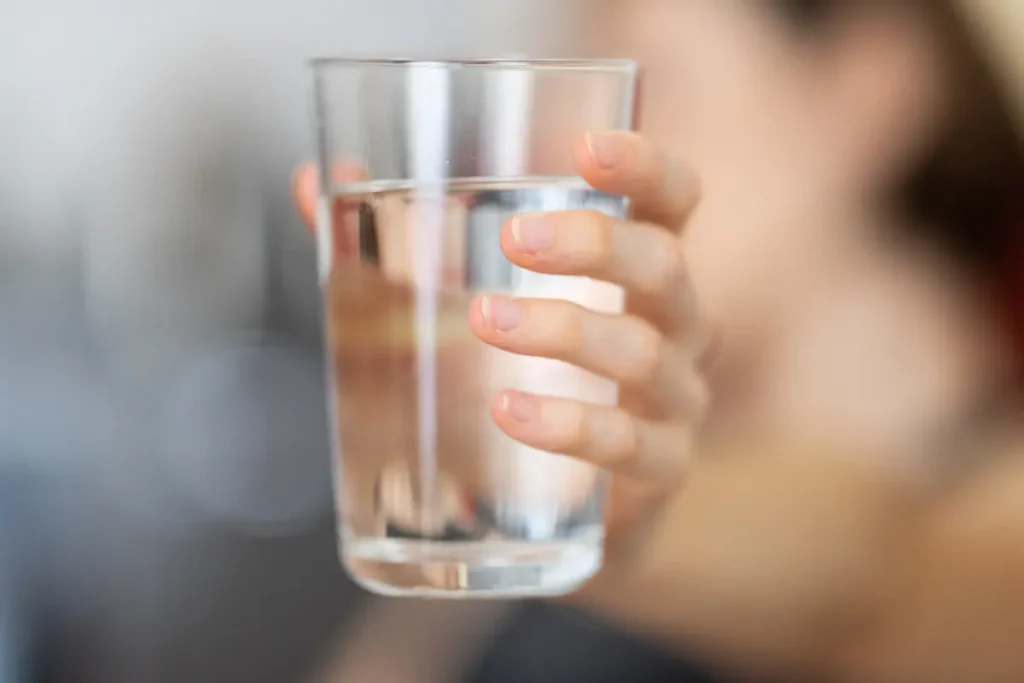
Yes, fleas are scared of water. Fleas are at risk from water. If immersed for 24 hours, they will die. They can, however, endure for days on the water’s surface. A wax-like material that repels water and coats fleas. Water is kept out of the respiratory system by the waxy coating.
Larvae of fleas are particularly susceptible to drowning. They will die fast in a flooded area. Larvae in areas with inadequate drainage are killed by small amounts of precipitation or sprinkler water. Additionally, the water can dissolve adult feces, which larvae need as nourishment. Flea larvae can become submerged in collected moisture on glass surfaces in research labs.
Flea larvae are found outdoors and in the top two cm of soil. More than 20% soil moisture will kill them. The larvae climb to the surface when soil moisture reaches 20%, and a film of water forms on the ground’s surface, which causes the larvae to drown.
Can You Kill Fleas With Just Water?
No, dropping fleas into the water won’t kill them. Water alone will not kill the fleas. Use a flea-repelling shampoo if you want to prevent infestations. After the bath, a shampoo infused with cedar, eucalyptus, lavender, or citrus oil may help keep fleas away. Additionally, cedar has been recommended to keep fleas away from sleeping spaces for pets, and some people claim that rubbing fennel leaves into a pet’s coat would also keep fleas away.
Can Fleas Survive Soapy Water?
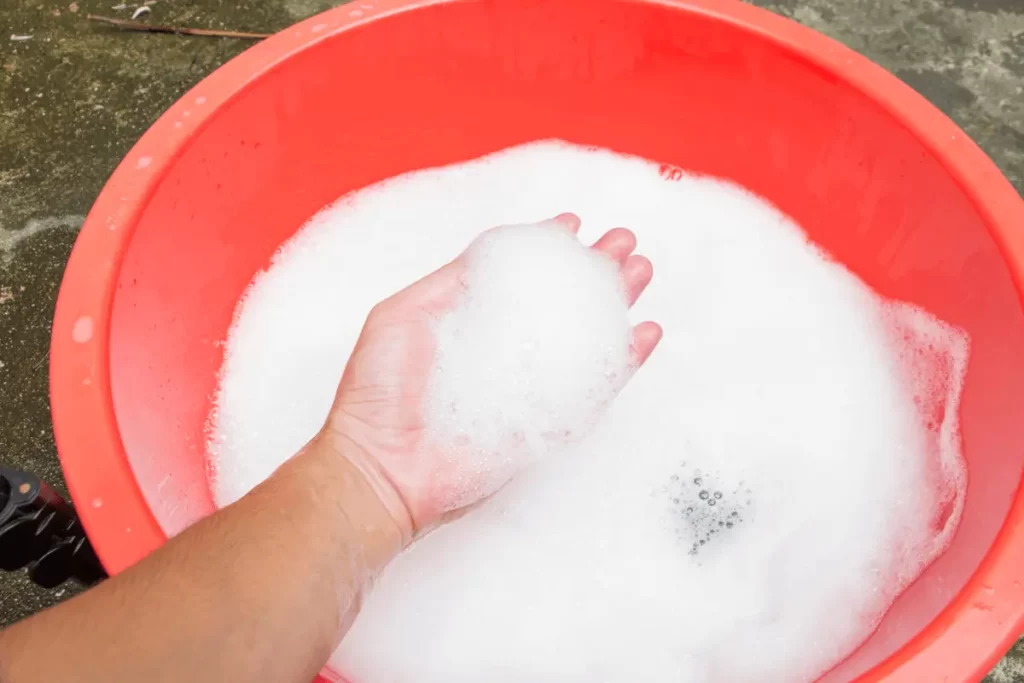
No, fleas cannot survive in soapy water. Exoskeletons on fleas enable them to float in water. Even so, the surface tension produced by soapy water will damage the exoskeleton and cause adult fleas to sink. Therefore, the soap effectively drowns the fleas.
Until you start rinsing, wait around 5 minutes first before soapy water kills the fleas. To remove the soap, use a glass of water or a portable shower head. To kill fleas with soapy water, start at the top of your pet’s body and work your way down to the tail.
Do Fleas Die In Hot Water?
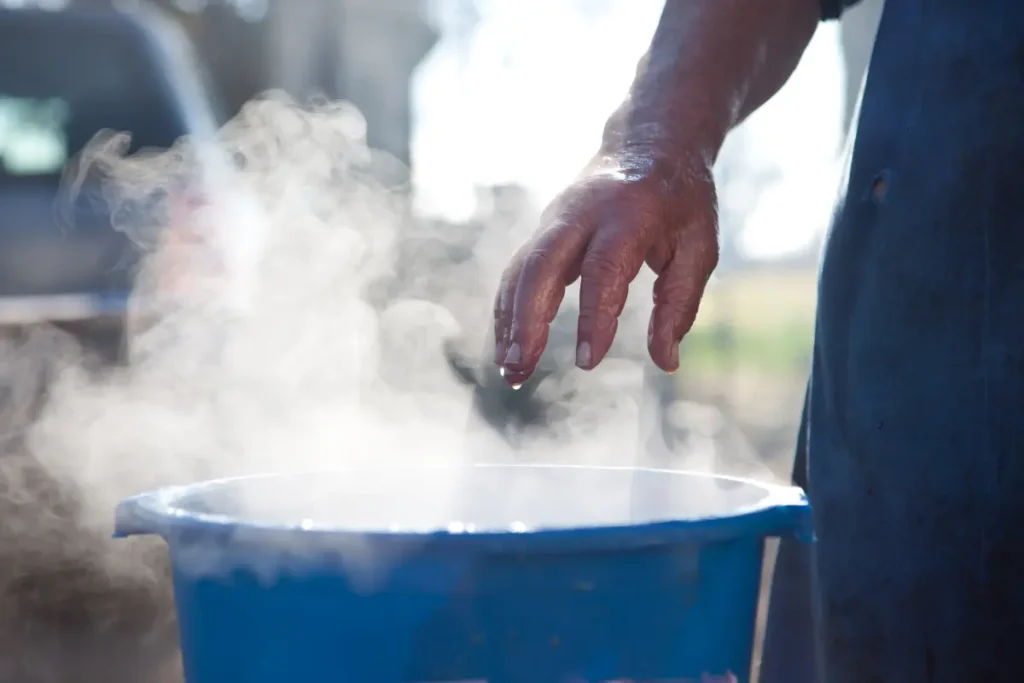
Yes, hot water can kill fleas. Any temperature of water over 95°F causes them to die. P putting flea-infested bedding in the washing machine’s hot wash cycle can help kill the fleas.
Fleas on cats cannot survive in water that is over 95°F. If the relative humidity doesn’t rise beyond 75%, they will die in 48 hours at this temperature. Flea eggs cannot survive in water that is hotter than 100.4°F. In somewhat colder water, 95°F, 40% of the eggs will hatch. The eggs will dry out if the relative humidity falls below 75%. Also, the eggs will perish because heat builds up inside the shells in totally saturated air.
Even if some eggs hatch at 95°F, the larvae cannot mature into adults because it is too hot. Only about 30 percent of larvae survive long enough to spin pupae and finish their pupal-imaginal molt, but all fleas will die inside the cocoon and never emerge.
Will Cold Water Kill Fleas?
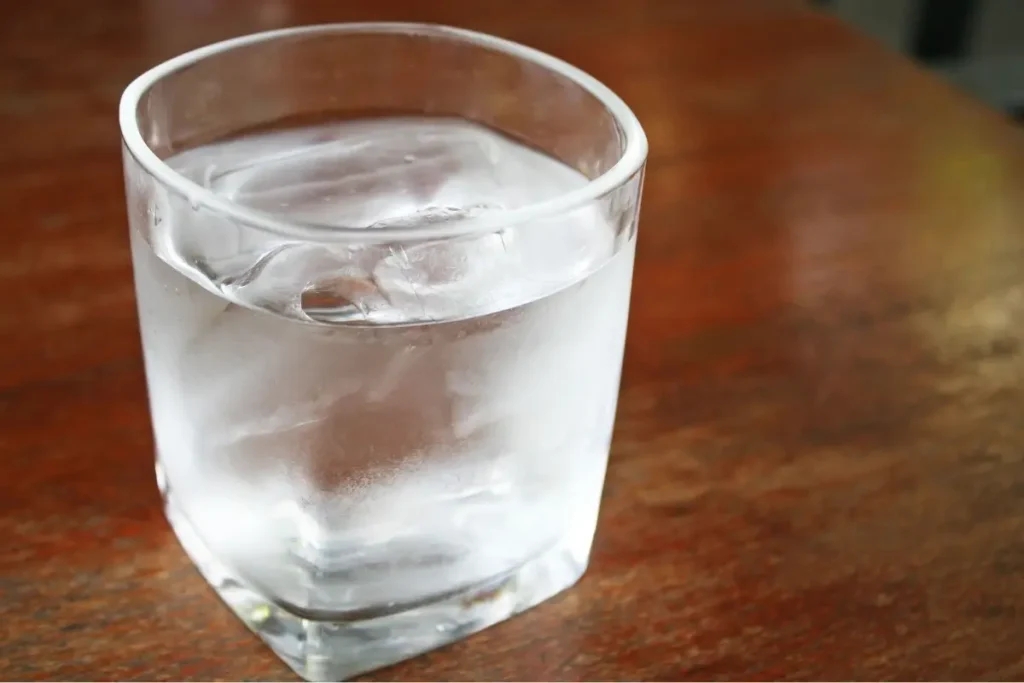
Yes, Clod water kills fleas. Flea eggs and adult fleas do not soon die in water. When submerged in water, many flea eggs can survive for days; flea eggs are probably no different. Therefore, killing fleas just by bathing pets would not be successful.
In water that is cooler than 46°F and hotter than 95°F, adult fleas die. Flea eggs and larvae, considered immature fleas, are slightly more sensitive to the cold and will perish at temperatures below 55°F.
Adult fleas will die considerably more quickly in the water below freezing; they will perish after five days in water that is 30.2°F. Compared to those at freezing conditions, the lifespan of an adult flea virtually doubles with only a 7°F rise in temperature, with a 10-day survival period at 37.4°F.
Can Fleas Drown In Water?
Yes, fleas can drown in water, but it takes longer. Fleas may float and survive in regular water for hours. They can even jump out of the water to prevent themselves from drowning.
Even adults and eggs of fleas may withstand submersion in water. Flea eggs are designed to withstand drowning. Flea eggs have a unique structure termed a “plastron” that enables them to survive even when submerged beneath the water’s surface.
The egg’s shell contains a gas layer that resembles a mesh that aids in the egg’s ability to absorb oxygen from the water while preventing water from entering the egg.
How Fast Do Fleas Drown In Water?
Fleas take some time to drown in water. Fleas can float on the surface of normal water for seven days, but if they are immersed, they will drown after 24 hours. It will be completed more quickly if dishwashing soap and water are combined.
To drown, a flea needs to be submerged for a long time. Fleas can be killed more quickly and effectively by submerging them in a cup of water diluted with dish detergent instead of drowning them. This method will trap fleas, preventing them from jumping out of the water or escaping.
Conclusion
Fleas cannot swim. When thrown into the water, fleas may appear to be able to swim, but this is incorrect. As a substitute, they rely on their cuticle wax to keep them afloat and enable them to thrash around on the water’s surface until they come across anything they can cling to and then jump out of the water.
The exoskeleton of mature fleas is compromised by soapy water’s surfactant or surface tension, which also causes the fleas to sink. Consequently, the soap practically drowns the fleas. Additionally, fleas that are adults die in water at temperatures lower than 46.4°F and higher than 95°F.
References
Miarinjara A, Rahelinirina S, Razafimahatratra NL, Girod R, Rajerison M, Boyer S. Field assessment of insecticide dusting and bait station treatment impact against rodent flea and house flea species in the Madagascar plague context. PLoS Negl Trop Dis. 2019 Aug 6;13(8):e0007604.
